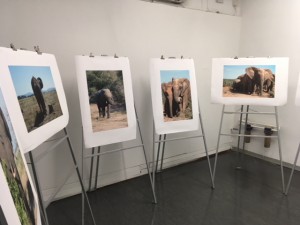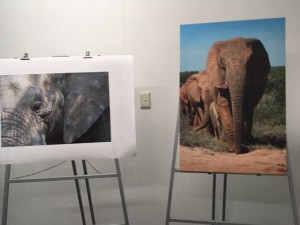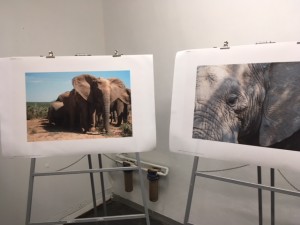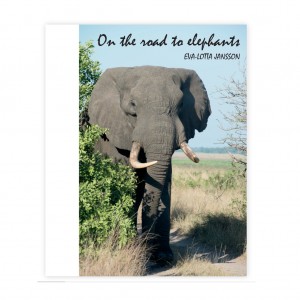RIP Sudan the rhino
This morning I woke up to Sudan the rhino having died. Sad and sobering news. A call to action.
Why? Why is the death of this particular rhino so significant, you may ask? We hear of horrific butchering and killings of rhinos almost every day, due to poaching.
Sudan was the last male of the Northern White Rhino (at least as known to man). Although now very old, Sudan had been hanging on as long as he could, trying to help with the propagation of his kind. Now he is no more.
As he lay dying, Sudan became a symbol of the fight for wildlife’s survival, in a race against time.
As he lay dying, Sudan became a symbol of the fight for wildlife’s survival, in a race against time.
We — humankind — should have been able to save this rhino sub-species from extinction, an extinction we, ourselves, caused through poaching and other environmental threats.
A few days ago, we, I, the world that was watching, had taken heart when the news came that Sudan was recovering a little. He was eating.
On March 9, Ol Pejeta Conservancy, Sudan’s care-giving home in Kenya, updated its supporters via Facebook, saying: “For three consecutive days, Sudan has left his boma in the early morning and browsed in the greater enclosure. His improved mobility is an encouraging development and we hope that this continues over the coming days.
“His appetite — which had diminished greatly over the past week — has also improved. He is still under round-the-clock monitoring by our vet teams and his caregivers.”
But this morning, Ol Pejeta reported that: “Sudan, the world’s last male northern white rhino, age 45, died … on March 19th.”
I’d started following one of Sudan’s care-giving rangers on Instagram recently. James Mwenda has been making some very wise and inspiring commentary there. A line from his Instagram bio reads: “The world is ours, but won’t be ours 4ever until we learn to respect animals.”
He is so right. And I send my condolences to James, through this blog, tonight.
I don’t know when or where, we, as humans, learned that there are always second chances? Don’t get me wrong, I’m by no means a pessimist. I know that nature has an uncanny way of healing and bringing itself back from the brink of extinction, but how does the ecosystem recover from this?!
Yes I know that Ol Pejeta will try to impregnate remaining females in vitro. It said so, when announcing Sudan’s death.
But how many irreversible disasters like these do we have to be presented with, as humans, before we care enough to act?
Is the problem that these animals look like exotic, ancient fantasy-creatures in a faraway land? Possibly so. But they are, nevertheless, part of the global ecosystem — the ecosystem that we humans are part of, and depend on to survive.
Perhaps that’s not the most highbrow reason to use here, in this blog, to suggest that we should care a little more. Simply offering the opinion that these are creatures with hearts and families too, should perhaps be enough? But the simple truth is, that: we cannot survive, long-term, without these animals. And wildlife needs to be able to roam free, and relatively undisturbed, to be able survive in a natural way, not simply kept in a zoo.
By not safeguarding these animals and their environments, we are literally killing the human race.
Wildlife is an integral part of the ecosystem, on which we depend. When these animals are killed or die off in unnatural ways, it alters and destroys the ecosystem, locally and globally.
So what are we to do if we actually do care and ‘want to make a difference’? Well, there are no easy and fast answers. But, I think that the best answer I have to give myself, tonight, is to promote education.
Conservation issues are complex. And any propaganda touting easy answers should probably be used with a grain of salt.
Conservation issues are complex. And any propaganda touting easy answers should probably be used with a grain of salt.
Let’s learn as much as we can about conservation; let’s try to understand what’s actually going on. Conservation issues are complex. And any propaganda touting easy answers should probably be used with a grain of salt.
Wildlife-conservation issues simply can’t be narrowed down to “winning the war on a poaching.” To do just that, many other related issues need to be understood and addressed, including extreme poverty, lack of available land and human-wildlife conflict.
Let’s listen to those who actually face these issues here in Africa — and learn from those ‘in the know,’ before we jump on any bandwagons and let our battle cries affect the global debate. That’s if we want to use our passionate care for the right purpose, don’t we?
At least that’s the best motto I can think of for myself right now — to learn as much as I can about these complex issues, from those living on the ground, and ‘in the know.’
I’d like to tell some more stories about these issues. Feel free to hang out with me here as I do. As I learn more, I hope to share a useful thing or two.
PS.
As I write this blog, I’m still deliberating about how to write the caption of a favorite rhino picture of a mine. It’s a white rhino that I photographed in Kenya during late 2013. I was there on a story about the UK government learning more about, and getting involved in, supporting fighting wildlife crime there. It’s a trip when I also had to photograph a very sad sight: the dead and stinking corpse of an elephant who had been killed by ivory poachers.
The picture I’m writing the caption for is of a white rhino, and it looks like a younger Sudan, or at least a very close relative. I’d like a bit more clarity around if this is a picture of the northern white rhino (as opposed to a southern white rhino).
On that same trip to Kenya, I learned from a guide at Lewa Wildlife Conservancy how to remember which is called a white rhino (they are actually not white, but more grey) and a black rhino. It’s easy, he said, the white rhino is actually the ‘wide’ rhino, as in the look of its face and horn. In comparison, the black rhino has a slim and pointy horn.
We didn’t discuss the difference between the northern vs. the southern white rhino at the time. So I’d like to learn a bit more about this before I post the picture.
Once I’ve deliberated, I think my rhino picture is likely to join the elephants on my Instagram account, www.Instagram.com/Lottaimage where I share snippets from my new book, ‘On the road to elephants.’
This story was also published on Medium.com, where I now also frequently blog: https://medium.com/@evalottajansson





